
Are you feeling in the yellow zone?’ Thomas shouts across the playground as he chases the pirates away from a pot of treasure. As the children run around the playground and jump off imaginary planks into the sea, the atmosphere is one of high energy and playfulness. But the tide quickly turns. Outnumbered, Thomas is on the verge of tears as George and his friends steal the treasure. He is now in the Red Zone, one of the four Zones of Regulation devised by occupational therapist Leah Kuypers as a roadmap to help children organise their ‘feelings, states of alertness, and energy levels’.
WHAT ARE THE ZONES OF REGULATION?
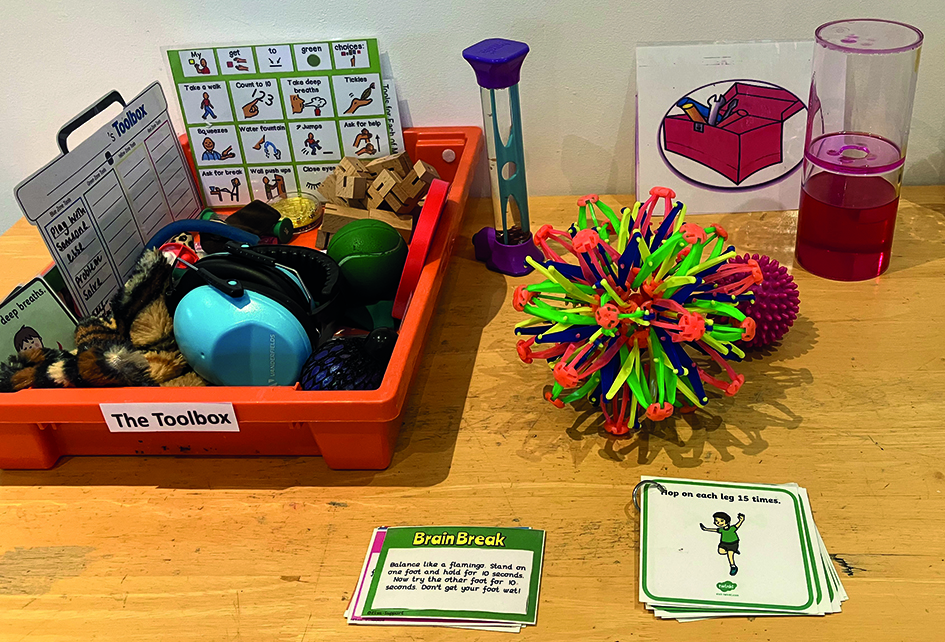 The Zones of Regulation (The Zones) is a social emotional programme used widely in UK primary schools to help foster regulation skills. It is a framework and curriculum based around the use of four colours – blue, green, yellow and red – to help children self-identify how they are feeling and categorise it based on colour. It launched in the USA in 2011 and is now used in over 100,000 mainstream schools worldwide with children aged four up to adulthood.
The Zones of Regulation (The Zones) is a social emotional programme used widely in UK primary schools to help foster regulation skills. It is a framework and curriculum based around the use of four colours – blue, green, yellow and red – to help children self-identify how they are feeling and categorise it based on colour. It launched in the USA in 2011 and is now used in over 100,000 mainstream schools worldwide with children aged four up to adulthood.
It is used widely in the UK, mainly in primary schools, where teachers use the key principles of the programme to support children’s social and emotional learning. Many nursery and infant schools use a simplified version of the framework to help young children recognise the connection between their physical reactions and their core emotions, such as anger, sadness, happiness, surprise and fear. Some early years settings have also developed their own version of it linked to resources such as The Colour Monster storybook by Anna Llenas, which also categorises emotions by colour.
Kuypers says, ‘The idea is that by giving children a simple language and visual structure to identify and communicate their feelings, they can learn strategies to regulate themselves more easily. Teachers also benefit from having the resources to co-regulate with their learners.’
One of the key principles of The Zones is that ‘all zones are okay’ and there is no right or wrong way to feel. Once children start to develop self-awareness and can match their feeling to the co-ordinating zone, they can then move on to learning how to regulate their zones. The objective is to empower children to develop their own pathway, or mind map, using a set of tools that are unique to them, to effectively navigate and regulate their emotional states, or zones, throughout the day.
Here are some suggested tools to manage feelings in each zone (these can be customised to the individual child):
- The Blue Zone: low levels of energy. Feel down, sad, sick, tired or bored. Tools: a hug or comfort from a caregiver if sad; stretching their body to get more energy flowing if tired; rest if unwell.
- The Green Zone: medium levels of energy. Feel content, focused, happy or calm. Tools: a healthy snack; some exercise outdoors; pausing for a mindful moment. These are restorative actions that help children proactively care for themselves and be ready to move on to the next transition with ease.
- The Yellow zone: increased levels of energy, more intense feelings. May feel worried, excited, silly, nervous, confused, overwhelmed or frustrated. Tools: deep breathing; use of a fidget toy or connecting with someone for support.
- The Red Zone: extremely high levels of energy with big feelings. Might be furious, terrified, devastated, out of control, elated or ecstatic. Tools: in this zone, children need tools that ‘help them gain a sense of control or stay safe and are calming’, Kuypers says. It could be deep breathing or physical activity such as running or yoga.
GLOBAL SUCCESS
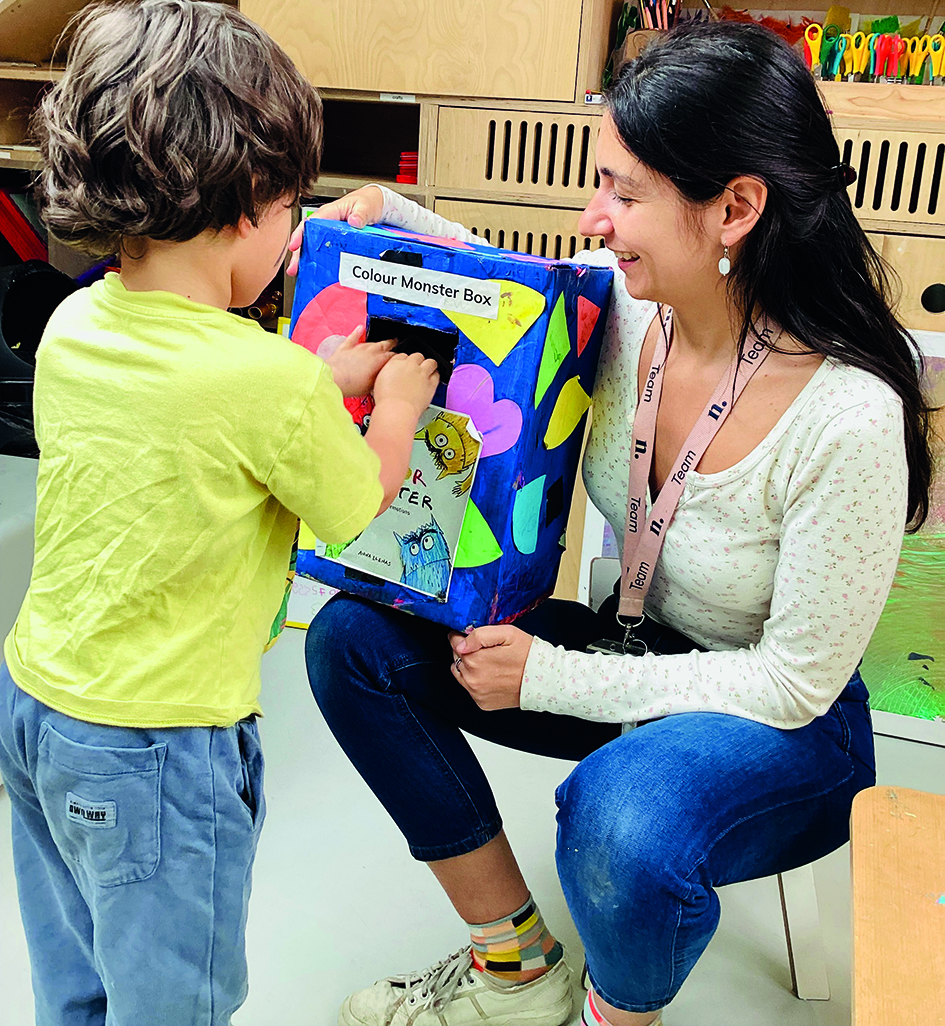 Kuypers developed The Zones while working as an occupational therapist and autism resource specialist in state schools across the USA. She first realised they were effective when working with a kindergarten child in a special school. ‘He came from a background of trauma. He was reactive, tripping, oppressing and showing really extreme behaviour. I started working on The Zones with him and a few months in, of his own will he put his picture in the Red Zone and walked out to take a break – this wasn’t something we were even teaching at that point. This was an “aha” moment when I saw a child who could barely go through the ABCs but could recognise his emotional state. By the end of the school year, he would check in a zone and, in his learning station, he would just stand up and do some yoga poses and breathing. He moved back into mainstream education the following year.’
Kuypers developed The Zones while working as an occupational therapist and autism resource specialist in state schools across the USA. She first realised they were effective when working with a kindergarten child in a special school. ‘He came from a background of trauma. He was reactive, tripping, oppressing and showing really extreme behaviour. I started working on The Zones with him and a few months in, of his own will he put his picture in the Red Zone and walked out to take a break – this wasn’t something we were even teaching at that point. This was an “aha” moment when I saw a child who could barely go through the ABCs but could recognise his emotional state. By the end of the school year, he would check in a zone and, in his learning station, he would just stand up and do some yoga poses and breathing. He moved back into mainstream education the following year.’
Although The Zones curriculum was initially developed for neurodivergent learners, Kuypers soon realised the framework was equally effective in supporting learners of all types and ages. She wrote the original curriculum as part of her Master’s degree dissertation, later published in 2011 by Think Social Publishing, selling more than 350,000 copies worldwide.
In May this year, an updated version was launched, The Zones of Regulation Digital Curriculum, which includes interactive presentations, videos and new visuals.
Kuypers has visited the UK on numerous occasions to run training sessions for local authorities. Between the years 2021-2023, she trained over 1,200 schools, professionals and parents across the UK, along with 40,000 people worldwide.
But despite multiple studies showing it has a positive impact on learners, the programme does not have a robust evidence base to date. Kuypers says there are currently ‘a number of multi-year randomised control trials in progress’, which are outlined on The Zones website.
CO-REGULATION AND CHECKING IN
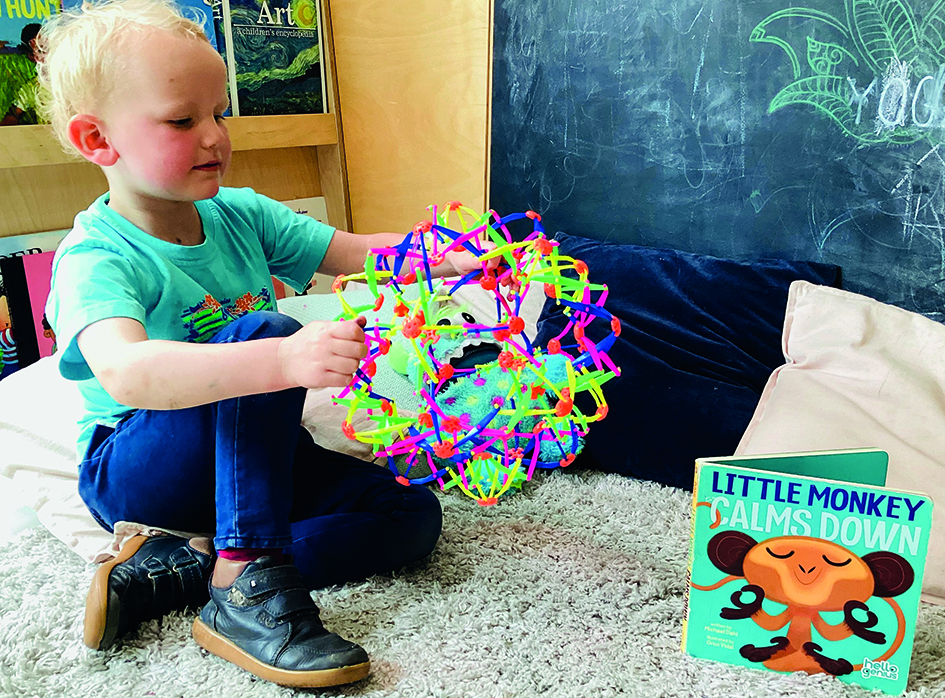 Kuypers likens The Zones to a ‘choice-directed buffet’. She says, ‘There is no one way to use it. It’s a way of thinking, something that’s infused into the climate of the classroom.’
Kuypers likens The Zones to a ‘choice-directed buffet’. She says, ‘There is no one way to use it. It’s a way of thinking, something that’s infused into the climate of the classroom.’
Some teachers might have Zones check-in times where everyone identifies how they are feeling or what zone they are in. Some use it when transitioning in and out of the classroom, where children move their photos or names into the coloured zone they are in. It can also be used spontaneously. For example, a teacher may notice that a child has her head hung low and her lip out. They might say, ‘Lilly, let’s check in with The Zones. How are you feeling?’ They may pull out some portable visuals of The Zones or go to an area or station with The Zones displayed. The teacher can ask the child to show how she feels by pointing to the colour. If the child is unsure, the teacher can help raise awareness by saying, ‘Your lip is out. Your head is down. Maybe you’re feeling sad. Sad is in the blue zone.’
Kuypers says, ‘Teachers can model language around The Zones, saying things like “I’m feeling excited because we have a fun day planned. I’m in the yellow zone”. Afterall, none of us are born being able to identify what anxiety feels like. It has to be constructed, like all emotions.’
When using The Zones with four-year-olds, Kuypers says, ‘Keep it to two emotions per zone. For example, start with just happy and calm in the Green Zone. Spend time identifying facial expressions and body language for each zone. And ensure that parents are kept informed about The Zones.’
She adds, ‘Co-regulation is the foundation for self-regulation. Younger children don’t have all the tools yet, they don’t have metacognition – the higher-level thinking – to be able to self-regulate. A caregiver noticing how they are feeling, and then socially supporting them through that, is co-regulating.’
INTENDED USE
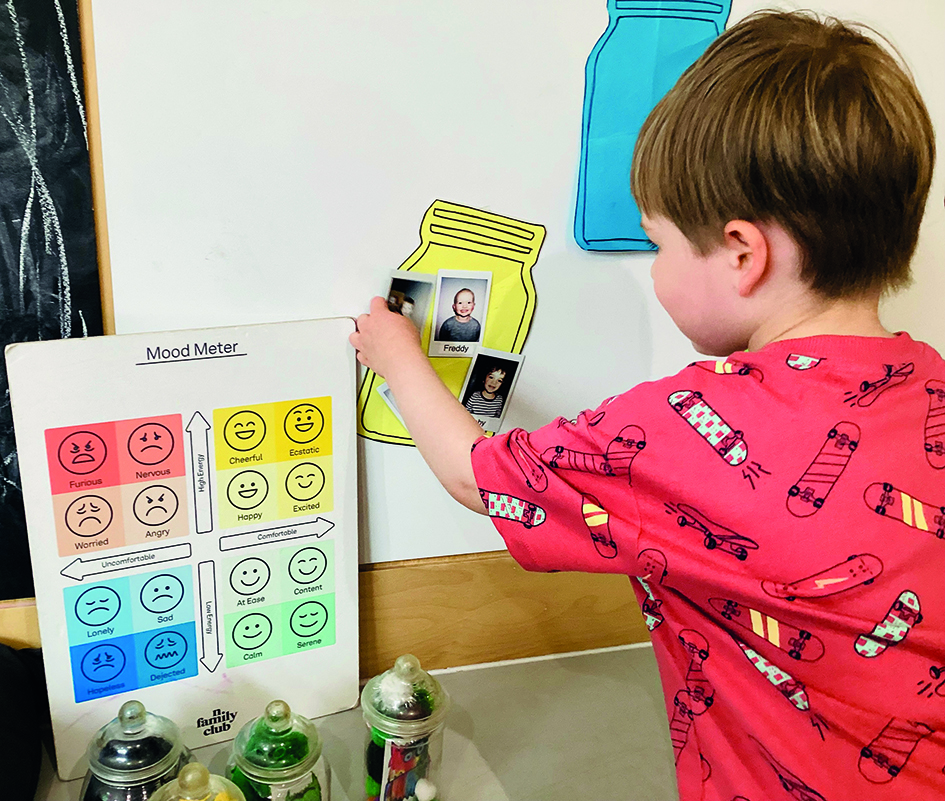 Training is not a requirement when using The Zones. Some schools follow the curriculum from The Zones of Regulation book and use the programme with fidelity. Some have had training cascaded down to them. And others are using the broad principles of The Zones, using the wealth of information that is in the public domain.
Training is not a requirement when using The Zones. Some schools follow the curriculum from The Zones of Regulation book and use the programme with fidelity. Some have had training cascaded down to them. And others are using the broad principles of The Zones, using the wealth of information that is in the public domain.
Kuypers’ mission is to help learners have a ‘healthier relationship with their feelings and provide them with a sense of wellbeing by giving them a strategy to build self-awareness and know how to manage their feelings’. Her goal was to make it ‘affordable, accessible and something that could be easily implemented in classrooms and the homes’, she says.
The book, or the new digital curriculum, provides teachers with the resources, visual supports and instructions to guide them through implementing the programme and how to teach it with fidelity. But when settings do not use the curriculum, Kuypers says there is a danger that the intention gets misconstrued. ‘It’s more than four colours on the wall with a few feelings. The intention is not to tie it in with behavioural or point systems, nor to convey that the Red Zone is bad, and you have to be in the Green Zone.’
There are also a lot of counterfeit resources on the market that do not represent Kuypers’ thinking and can be ‘positively harmful’, she says. ‘The Zones’ mission is to help learners feel comfortable identifying their range of feelings. When we talk about The Zones, it’s how we feel on the inside, not our behaviour on the outside. So, inside I’m feeling nervous or worried. If children are so focused on feeling that they must be in the Green Zone, they will ignore all their internal feelings and not regulate themselves.’
CASE STUDY: The Villa School and Nursery, Forest Hill, south London
The Villa School and Nursery uses a whole-school approach to The Zones, embedding the key principles of the programme alongside other tools such as The Alert Program and Ruler Approach. ‘Identifying emotions to colour gives children who do not have the language the ability to share how they are feeling. It is particularly helpful for children with SEND,’ says learning support teacher Christina Blair-Oliphant.
‘Many children start learning about emotions through The Colour Monster and The Zones is an extension of this. On a typical day there may be individual or whole-class check-ins with The Zones. Some classes have individual photos of the children where they move their faces onto the coloured zone they are feeling. An adult then finds the time to check in to see if they are OK. There are toolboxes in each classroom and children are taught strategies to use if there is nothing physical at hand, such as breathing exercises.
‘The idea is to recognise, express and label the emotion, but for the younger children it may just be identifying the colour. When strong emotions are involved, we co-regulate with them. Once the children understand the concept, they will explore ways to help regulate themselves with the support of sensory devices and calming techniques. We often find children know what helps, whether it is listening to music, squeezing a stress ball, watching a liquid gloop timer or a hug.
‘Naming the emotion helps children with their emotional literacy.’
- The Ruler Approach: www.rulerapproach.org
- The Alert Program: www.alertprogram.com
CASE STUDY: The Hall School, north London
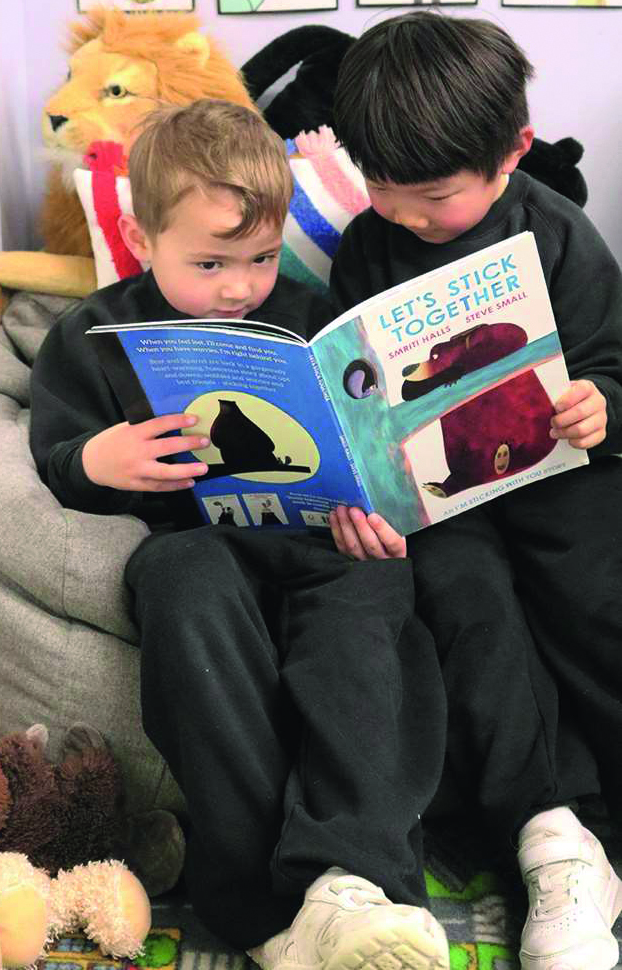 The Zones are embedded into The Hall School’s Life Skills (Personal, Social and Emotional Development) curriculum. Teachers draw inspiration from Leah Kuypers’ book The Zones of Regulation, and have adapted the lesson plans for different age groups.
The Zones are embedded into The Hall School’s Life Skills (Personal, Social and Emotional Development) curriculum. Teachers draw inspiration from Leah Kuypers’ book The Zones of Regulation, and have adapted the lesson plans for different age groups.
Early years lead Dominique Shirbini says, ‘Each class has a My Feelings chart which encourages children to identify, manage and regulate their emotions throughout the day. Children are encouraged to move their individual thumbnail photos to the zones on the chart they feel they are in. We then teach the children strategies.
‘A child may come into the classroom from playtime and feel dysregulated. The child identifies how they’re feeling by looking at the chart and moving their picture to the red zone. They might take themselves to the calm corner or speak to a teacher.
‘One child was so overcome with emotion, he couldn’t tell his friend his idea and quickly became frustrated. Helping him to recognise he was frustrated enabled him to remember to take deep breaths. When he did this, he was able to tell the other child what he was thinking.
‘If children are reminded to think about what they’re feeling, they’re better able to manage their feelings. We are better able to support them and they’re more able to communicate.
‘The next step is self-regulation. We want children to identify and manage their emotions by the end of Reception.’
CASE STUDY: N Family Club
 Nursery group N Family Club has developed an interactive Mood Meter with 16 emoji faces, each depicting emotions that are categorised by four colours: red (uncomfortable), yellow (high energy), blue (low energy) and green (comfortable). Emotions range from ecstatic, dejected, angry to serene.
Nursery group N Family Club has developed an interactive Mood Meter with 16 emoji faces, each depicting emotions that are categorised by four colours: red (uncomfortable), yellow (high energy), blue (low energy) and green (comfortable). Emotions range from ecstatic, dejected, angry to serene.
‘The colours of the Mood Meter link to The Colour Monster’s emotions,’ says senior education adviser Sapfo Pantzaki.
‘Our curriculum cards include questions around “How does the colour monster feel?” with learning opportunities for all, from the babies to the pre-schoolers. For our younger children it links with Makaton signs for emotions like happiness and sadness.
‘The Mood Meter is used for daily emotional check-ins. We use it for our regular mindfulness sessions to discuss how they are feeling. It is also used alongside our mindfulness baskets, with tools to support regulation – feathers, breathing balls and coloured fabrics.
‘When children are in emotional distress and need support to co-regulate/self-regulate, the Mood Meter supports conversations about how they are feeling, building an understanding of their emotions.
‘The role of the adult is of the co-regulator, supporting the children to understand and learn how to cope with those big feelings, by validating their needs, actively listening and supporting children through those stages in their emotional development.
‘Children can show how they are feeling with mark-making materials and emotion cards or a chart with the colours from The Colour Monster. The children also use mini-me figures to place themselves into the colour representing how they feel.’
Click on the links to see how other nurseries are using The Colour Monster:
FURTHER INFORMATION









